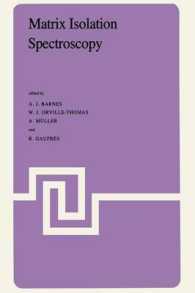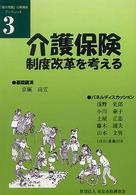Full Description
The first comprehensive guide to research methods and technologies in psycholinguistics and the neurobiology of language
Bringing together contributions from a distinguished group of researchers and practitioners, editors Annette M. B. de Groot and Peter Hagoort explore the methods and technologies used by researchers of language acquisition, language processing, and communication, including: traditional observational and behavioral methods; computational modelling; corpus linguistics; and virtual reality. The book also examines neurobiological methods, including functional and structural neuroimaging and molecular genetics.
Ideal for students engaged in the field, Research Methods in Psycholinguistics and the Neurobiology of Language examines the relative strengths and weaknesses of various methods in relation to competing approaches. It describes the apparatus involved, the nature of the stimuli and data used, and the data collection and analysis techniques for each method. Featuring numerous example studies, along with many full-color illustrations, this indispensable text will help readers gain a clear picture of the practices and tools described.
Brings together contributions from distinguished researchers across an array of related disciplines who explain the underlying assumptions and rationales of their research methods
Describes the apparatus involved, the nature of the stimuli and data used, and the data collection and analysis techniques for each method
Explores the relative strengths and weaknesses of various methods in relation to competing approaches
Features numerous real-world examples, along with many full-color illustrations, to help readers gain a clear picture of the practices and tools described
Contents
List of Figures vii
List of Tables ix
Notes on Contributors x
Preface xvi
1 Habituation Techniques 1
Christopher T. Fennell
2 Visual Preference Techniques 18
Roberta Michnick Golinkoff, Melanie Soderstrom, Dilara Deniz Can, and Kathy Hirsh-Pasek
3 Assessing Receptive and Expressive Vocabulary in Child Language 40
Virginia A. Marchman and Philip S. Dale
4 Eye-Movement Tracking During Reading 68
Reinhold Kliegl and Jochen Laubrock
5 The Visual World Paradigm 89
Anne Pier Salverda and Michael K. Tanenhaus
6 Word Priming and Interference Paradigms 111
Zeshu Shao and Antje S. Meyer
7 Structural Priming 130
Holly P. Branigan and Catriona L. Gibb
8 Conversation Analysis 151
Elliott M. Hoey and Kobin H. Kendrick
9 Virtual Reality 174
Daniel Casasanto and Kyle M. Jasmin
10 Studying Psycholinguistics out of the Lab 190
Laura J. Speed, Ewelina Wnuk, and Asifa Majid
11 Computational Modeling 208
Ping Li and Xiaowei Zhao
12 Corpus Linguistics 230
Marc Brysbaert, Paweł Mandera, and Emmanuel Keuleers
13 Electrophysiological Methods 247
Joost Rommers and Kara D. Federmeier
14 Hemodynamic Methods: fMRI and fNIRS 266
Roel M. Willems and Alejandrina Cristia
15 Structural Neuroimaging 288
Stephanie J. Forkel and Marco Catani
16 Lesion Studies 310
Juliana V. Baldo and Nina F. Dronkers
17 Molecular Genetic Methods 330
Carolien G. F. de Kovel and Simon E. Fisher
Index 354







